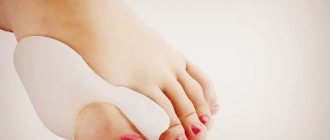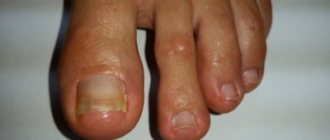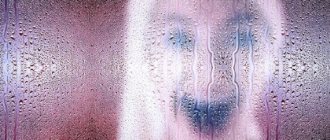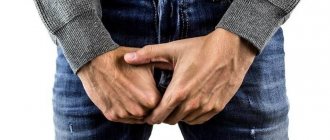The fact that a person may itch one or another part of the body is quite natural and not pathological. It’s another matter if this desire arises systematically, in the same area of the body, and intensifies over time. And other symptoms are added to the itching. Why do your feet itch in this case?
There are quite a few reasons - from uncomfortable clothing to serious illnesses. In this article we will look at this symptom in more detail and consider the causes of itching in the lower legs. We will also present directions for diagnosis and treatment of diseases characterized by similar symptoms.
Symptoms
As a rule, with pathological causes of itching of the lower legs, a person notices not only a persistent desire to scratch. Along with this, other symptoms also make themselves felt:
- Redness on the lower leg. Skin color may change to pinkish or reddish. This includes both a continuous area and small spots.
- Dry skin on the lower legs (the causes of the condition here are also pathological - we will consider them further). The dermis may peel and flake off.
- Severe to moderate pain (can also be caused by physical damage during scratching).
- Dry and itchy shins may be accompanied by cracking of the skin in this area.
- Formation of purulent blisters. The symptom differs in that these rashes emit an unpleasant smell of rotting. Please note that such bubbles cannot be burst or otherwise removed on your own.
- Burning in the lower leg area.
Such symptoms may be supplemented by signs of diseases that do not extend to the lower leg alone. For example, with an allergic reaction, the patient simultaneously suffers from a severe runny nose and cough. This condition is often perceived as an acute respiratory viral infection or a cold, and people do not pay attention to itchy skin on the lower leg.
With diabetes mellitus, along with such local symptoms, the patient may suffer from strong causeless thirst and increased urination. In case of neurological diseases, you may additionally suffer from mood swings.
When you need to see a doctor urgently
Here are some clear indications that you should consult a therapist as soon as possible.
- Your feet itch for longer than two weeks, despite the fact that you take care of hygiene, moisturize your skin and limit contact with possible allergens as much as possible.
- The itching is so severe that it keeps you awake at night or distracts you from work and personal life during the day.
- A strong desire to scratch occurs regularly and for no apparent reason.
- The itching gradually spreads to the entire body.
- “Scabies” is accompanied by a feeling of constant fatigue or fever.
Any of these symptoms indicate that you may have a serious illness. It needs to be diagnosed and treated.
Non-pathological causes
However, in most cases, the causes of itching of the lower legs are non-pathological. And those associated with the impact of any external factors on the body. In most cases it is the following:
- Drinking insufficient fluids. To ensure normal life, a person needs to drink at least 2 liters of water per day. If he drinks much less fluid, it will ultimately have a negative impact on his health. In particular, lack of moisture negatively affects the condition of the skin. They become dry and begin to peel, causing a person to experience itching and a persistent desire to scratch any part of the body.
- Cold climate. One of the common non-pathological causes of itching of the lower legs is prolonged exposure to low temperatures. An unpleasant sensation appears, in particular, with a sharp temperature change. When a person comes from the cold into a warm room. It also causes peeling of the skin and a desire to scratch it.
- Using inappropriate skin care products. Creams, shaving foams, shower gels may contain elements that individually irritate your skin, or even cause allergic reactions.
- Poor nutrition. This is a common cause of not only itching of the lower legs, but also problems with the body in general. We are talking about an addiction to fatty, sweet, smoked, floury, fried, spicy, salty foods. Such food negatively affects the functioning of the digestive tract and is not completely digested. One of the consequences of this is persistent skin itching. Which, among other things, can be felt in the area of the lower legs. In addition, a rash appears on the lower legs (in adults and children). In this case, you need to either completely limit yourself in consuming junk food, or eat it rationed, in small portions, making sure that it is not the main diet.
- Addiction to alcoholic beverages and smoking. Such bad habits have a negative effect on the entire body. One of the consequences is the appearance of itchy skin and rashes on various parts of the body.
Why do my feet itch? There may also be a serious pathological reason.
How to get rid of itching below the knees using traditional methods
In addition to the main treatment, you can make home remedies using traditional recipes.
- Mix St. John's wort, chamomile and mint in equal quantities, steam with boiling water and add to the bath. Carry out the procedure daily.
- Lubricate the affected area with castor or sea buckthorn oil
- Make apple cider vinegar lotions 3 times a day.
- Boil the dill seeds. After cooling, take the decoction 3 times a day, half a glass.
It is important to first establish why your legs below the knees itch, and then decide how to cure the disease. You cannot prescribe medications on your own.
Skin diseases
It is various kinds of skin diseases that are a common cause of itching, various redness, and rashes. In particular, they can affect the shin area.
The most common pathology in this vein is dermatitis. This skin disease can occur as a result of the influence of a variety of factors on the body: chemical, biological, mechanical. In particular, dermatitis is a consequence of mechanical injuries to the skin, burns, bruises, allergic reactions, and animal bites.
At its core, dermatitis is a chronic disease. Itching and other unpleasant symptoms occur in the same place. The main signs of dermatitis are as follows:
- Persistent itching, a strong desire to scratch one or another part of the body.
- Formation of redness and pinkish spots at the site of the lesion.
- Minor rash.
- The skin on the lower legs is cracking.
- Formation of small water or purulent blisters on the surface of the dermis.
Another popular skin disease that can cause itching is psoriasis. This is a non-infectious, chronic pathology that affects certain areas of the body. As a result of this disease, characteristic redness, somewhat elevated above its surface, appears on the skin, called psoriatic plaques. In some cases, the disease develops without them.
Psoriasis can be triggered by stress, systematic nervous strain, poor diet, and addiction to alcohol and tobacco. Depending on the stage of the disease, red itchy spots cover either a specific area of the body (in this case, the lower leg), or spread over all the skin.
Allergy
Itching in the area of the legs, knees, and inner thighs is one of the manifestations of an allergic reaction of the body. The list of allergens is quite extensive. Moreover, it is not common to all people. Each person has their own individual list of allergens. For some it is small, for others it is extensive. Note that susceptibility to allergies also depends on the state of immunity of a particular person. The more actively the body’s defenses work, the less likely it is that allergic reactions will occur.
There are several groups of allergy pathogens:
- Food. In particular, these are dairy and fermented milk products, citrus fruits, vegetables, sweets, etc.
- Medical supplies.
- Animal bites (particularly insect bites).
- Household allergens. These are household chemicals and cosmetics, synthetic materials, dust, etc.
- Pollen from flowering plants.
Allergies can manifest themselves not only as itching in the lower leg area. This is constant lacrimation, frequent sneezing, coughing, the appearance of skin rashes in the form of small pimples, etc. The condition brings the patient a lot of inconvenience and worsens his quality of life. Moreover, when scratching, it is easy to introduce an infection into the wound, which will add serious health problems.
Vascular diseases
Varicose veins on the legs in men and women can also begin to manifest themselves with itching in the lower leg area. With this disease, the venous walls lose their elasticity, the ability to narrow and stretch. The integrity of the venous valves may be compromised, causing pressure in the vessels to increase and blood stagnation to occur.
The causes of varicose veins on the legs in men and women are usually the following:
- Hard physical work.
- Wearing uncomfortable shoes.
- Systematic lifting of weights.
- Excess weight.
- In the male line - genetic predisposition.
- Sedentary, sedentary lifestyle.
- Wrong diet.
- High blood viscosity.
- Having bad habits.
- Diseases of the heart and blood vessels.
At the initial stages, the disease may manifest itself with itching in the lower leg area. But it is rarely the only symptom. The patient also complains of the following:
- Feeling tired in the legs.
- Feeling of heaviness in the lower extremities.
- Swelling after exercise.
- Feeling of "swelling" in the legs.
- Decreased sensitivity of the skin of the lower extremities.
- Feeling as if the legs are full of fluid.
- The appearance of vascular networks.
How and how to treat itchy legs below the knees
Various causes can cause itching of the legs below the knees; treatment and recovery depend entirely on a correct and timely diagnosis. Only the attending physician should be trusted to prescribe a course of therapy.
| Causes | Course of treatment (medicines, dosage, duration of use) |
| Dry skin | To get rid of the disease you need to drink at least 1.5 liters of water per day. Regular or mineral without gases, green or white tea without sugar will do. When taking a shower, you need to choose moisturizing cosmetics (milk, gel). For excessive dryness, nourish the skin with natural oils. |
| A tan | To avoid discomfort, you should apply sunscreen before sunbathing, and then smear your skin with after-sun lotion. With proper care, the epidermis will be protected from ultraviolet rays, which dry out and burn it, and will also be well hydrated. Also treat the affected area with drugs: Panthenol, Bepanten 3 times a day. |
| Insect bites | Treat wounds with boric alcohol, brilliant green, furatsilin solution, menthol ointment 2 times a day until the itching goes away and the swelling subsides. Alcohol tincture, Menovazin or Menovazan cream help well. They need to be applied 2-3 times a day until the problem is eliminated. |
| Allergy | To block the release of histamine, Ketotifen is prescribed 1 tablet 2 times a day. It is also recommended to treat the affected area with antihistamines. Antihistamine tablets Cetrin and Fenistil gel help well. |
| Skin diseases | The correct course can only be prescribed by the attending physician after a complete examination. For psoriasis, atopic dermatitis, and eczema, Skin-cap aerosol is used. For complex diseases, hormonal drugs can be prescribed: Prednisolone, Dexamethasone. You cannot take them for longer than 10 days. |
| Psychosomatic disorders | To eliminate itching, you need to correctly determine the cause. For disorders of this nature, only a psychotherapist can make a correct diagnosis. Self-medication can cause the problem to get worse. The complex prescribes sedatives, physiotherapy, and electrosleep. |
| Parasites | The following drugs help against helminths: Mebendazole, Pyrantel, Deparasite. Reception course: 30 days. Spregal aerosol helps well against scabies. At the initial stage, the disease goes away with one application. Benzyl benzonate emulsion – for the treatment of head lice and scabies. Apply 2 times every 2 days. Safe for children. |
| Liver | The doctor prescribes Essentiale 3 times a day for a month, Lipoic acid in the same course. |
| Phlebeurysm | Troxevasin, Detralex. Doctors also recommend using ointments and gels: Venoruton, Venitan, Ginkor Gel, Lyoton. |
| Fungus | Clotrimazole cream is applied to the affected areas of the skin in a thin layer 2-3 times a day for 2-4 weeks. |
Read also: Dryness and itching in the intimate area in women: causes and treatment of burning sensation
In addition to taking medications, simple rules can help eliminate symptoms and reduce itching:
- Apply a cold compress to the area of skin that itches.
- Don't be nervous, get a good night's sleep. If this doesn’t work, you need to take sedatives and drink tea with mint and lemon balm.
- Take vitamins, especially groups B and C. You can prepare a rosehip decoction and drink it instead of tea. Eat lemons or squeeze juice into drinks.
- Use natural cosmetics. Until the itching goes away completely, you can buy a children's care series.
- Wear comfortable clothes made from natural fabrics.
- Drink more water.
- Stick to a simple diet, excluding spicy seasonings, preserves, sweets, and alcohol.
Diabetes
With this disease, there is a disturbance in the functioning of the liver and kidneys. Hence, a large amount of toxins and other harmful substances accumulate in the patient’s body. Metabolism worsens, hormonal imbalance occurs, and the activity of the endocrine system is disrupted.
Of course, all of the above has a negative impact on the skin. Including the skin’s ability to perform essential functions. It begins to peel off greatly, which is accompanied by severe itching. The skin also becomes very dry and in some cases becomes covered with purulent blisters. The affected area here may also be the lower leg.
In some cases, unbearable itching appears in the thigh area. Redness may occur, and the skin becomes loose and inelastic. The problem is that it is impossible to get rid of diabetes forever. The patient can alleviate his condition by eliminating alcoholic beverages, nicotine, and foods containing large amounts of sugar from his usual diet.
Liver and kidney diseases
Failures in the functioning of these organs are the causes of pathological changes in the condition of the skin. Small rashes appear on them. The latter irritate the upper epithelial layer, which is manifested by itching and the desire to scratch the affected area.
This problem is accompanied by other characteristic symptoms: a constant feeling of bitterness in the mouth, rapid fatigue, and the appearance of a network of blood vessels on the skin. These symptoms can be used to identify quite serious diseases: liver cirrhosis, cholelithiasis, hepatitis.
As for kidney diseases, their development may be accompanied by the release of excess salts through the skin and mucous membranes. Salt has a negative effect on them - it tightens and dries them out. The skin begins to peel off and become very itchy. This may also be accompanied by swelling of the face and legs.
You have some kind of disease - perhaps not yet diagnosed
Often itching is the first symptom of quite serious illnesses. It may indicate:
- liver diseases - for example, viral hepatitis or cirrhosis,
- kidney disease,
- problems with the thyroid gland - hypothyroidism or hyperthyroidism,
- some types of cancer (for example, Hodgkin's lymphoma or skin cancer may manifest themselves as itching).
Itchy feet after a shower: reasons
Neurological problems
We look at the causes and treatment of itchy skin on the shins. This condition can also be provoked by various neurological conditions - periodic stress, depression, anxiety, nervous breakdowns.
One of the responses to severe emotional shock can be skin problems. In particular, the occurrence of severe itching. For some people, this is a chronic phenomenon, and it affects the same areas of the skin. In response to a strong experience, the skin on the hands or, as in this case, in the area of the legs begins to itch.
Diagnosis of the condition
If you are very worried about itching in the lower leg area, and the problem returns to you periodically, then you need to visit a dermatologist. Medical care begins with diagnostic measures:
- First of all, the doctor gets acquainted with the patient’s medical history, his outpatient card. Based on this information, it is easier to understand what exactly triggered the itching.
- Visual inspection of the affected area.
- Questioning the patient about the symptoms that bother him, describing his general condition, diet, lifestyle, etc.
If necessary, laboratory tests are carried out:
- General and biochemical blood test.
- Urine and stool analysis.
- Laboratory examination of scrapings from the itchy area.
In some cases, instrumental diagnostics will be required:
- Ultrasound.
- X-ray.
- Endoscopic procedures.
- CT.
- MRI.
The above is prescribed if there is a suspicion of serious pathologies - diabetes, liver disease, kidney disease, varicose veins.
Treatment
How to relieve itchy shins? In this case, conservative (that is, drug) treatment is prescribed. Medicines are selected individually for each case. In particular, the doctor may prescribe the following to the patient:
- Antioxidant drugs.
- Vitamin complex.
- Detoxifying agents.
The main treatment is not aimed at the symptom itself (scabies), but at eliminating its cause - a specific disease or pathology. If itching of the legs due to varicose veins is detected, then medications are prescribed that improve the condition of the veins. Designed for both external and internal use.
If diabetes is the cause of the symptom, the patient is prescribed a certain dosage of insulin and a special diet. If the cause is a nervous disease, sedatives and tranquilizers are prescribed.
Treatment of skin diseases here is more complex and takes place in several stages. At the first stage, drug therapy and the use of external preparations - ointments, creams - are prescribed. At the next stage, an individual diet is drawn up and physiotherapeutic procedures are carried out.
If your feet itch and turn red
If your feet are itchy and covered with red spots, then this may be a symptom of erysipelas. The disease threatens the development of elephantiasis, as it impairs lymphatic drainage.
Erysipelas are caused by streptococci. At first, a person simply begins to feel unwell and his body temperature increases. The appearance of a red spot on the leg is a secondary symptom of the disease, or its relapse. Moreover, it can happen even 6 months after the first episode of inflammation.
The spot is slightly swollen and painful. At first it hurts, and then it starts to itch.
Treatment of the disease requires antibiotics. As a rule, improvement occurs quickly, within 24 hours from the start of therapy. The stain should be smeared with creams with an antibacterial effect. Antihistamines are also indicated to help eliminate the symptoms of the disease.
Folk remedies
If you are sure that the cause of itching in the shin area is non-pathological, turn to proven folk remedies that will ease the manifestation of the symptom:
- Baking soda compresses.
- Lotions with infusions of medicinal plants - aloe, chamomile, calendula, sage.
- Apple cider vinegar compresses.
But even in this case, you should not resort to self-medication. Use these products only with the approval of your healthcare professional.
Prevention of the problem
Itchy skin is a small, but literally annoying problem. To avoid suffering from it, we recommend that you pay attention to these recommendations:
- Watch your diet - reduce the consumption of junk food, which has a negative effect on the entire body.
- Watch your drinking regime - it is recommended to drink at least 2 liters of water per day.
- Use a moisturizing, nourishing cream specifically for the skin of your feet that does not contain allergenic components.
- If you feel itchy after a breakdown, do not scratch the affected area. An unpleasant symptom can be relieved by applying a cold compress to the skin.
- Prefer clothes made from natural materials. Synthetics cause unpleasant sensations on the skin, including itching.
Are your shins constantly itching? There are many reasons for this condition, as you have seen. From synthetic clothing, stress at work to diabetes, varicose veins, liver and kidney damage. Therefore, you should definitely contact a dermatologist with such a problem.
Why do my legs itch after hair removal?
Shaving your legs can cause skin irritation. It begins to itch and becomes covered with red spots. To reduce the likelihood of inflammation, it is necessary to change machines more often and not use them for years.
The razor should be sharp so as not to injure the skin. You can use machines that are equipped with a special strip soaked in aloe extract. This will soothe the skin after shaving and also has a slight disinfectant effect.
During the procedure, it is best to use special shaving products rather than soap. These can be creams and foams. It’s good if they contain vitamin E or aloe vera. The use of such products helps to avoid skin irritation and itching. The procedure should be carried out in the bathroom or shower, as warm water removes hair better.
You should not shave your legs right before leaving the house. If you then put stockings on your feet, the likelihood of itching increases. It is best to remove hair in the evening so that the skin has time to regenerate.
You should not shave your legs in the direction of hair growth. This increases the likelihood of irritation.











